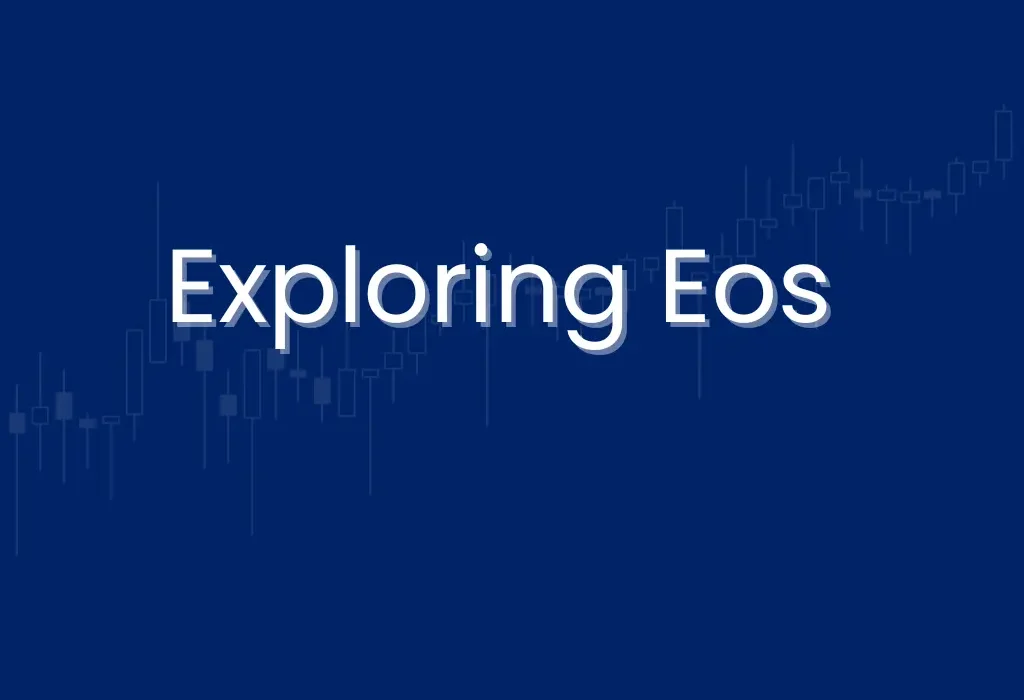EOS.IO, an award-winning blockchain platform, stands out due to its emphasis on scalability and user-friendliness; additionally, it supports decentralized applications. Block. one was introduced in June 2018; It is its native cryptocurrency. It was designed to address some of the speed, flexibility, and scalability issues encountered with earlier chains of blocks such as Bitcoin and Ethereum to meet industrial-scale DApp requirements more effectively.
We will uncover why EOS stands apart in the virtual chain arena concerning infrastructure needs as well as future aspirational goals! In-depth investigation. It can be thought of as an operating system-like structure upon which applications can be built, similar to how physical computers mimic various features like hard disk storage, local RAM, CPU(s), and GPU(s) for processing power as well as computing resources that are shared equally among coin holders. (Key Features of it).
Scalability One of Its signature features is its scalability. Achieves this through parallel execution and asynchronous communication techniques on its network; these mechanisms help ensure faster transaction speeds with better scalability than its predecessors.
Flexibility
One hallmark of the EOS ecosystem is its flexibility: with a generalized role-based permissions concept it allows developers to quickly freeze or repair broken applications that don’t function correctly – an invaluable feature that ensures they produce error-free programs.
Usability
Architecture These features enhance the usability of EOS by offering declarative authorization schemes, self-describing database schemas and interfaces, as well as web toolkits to create interfaces quickly. Developers can create and manage DApps more effortlessly.
It employs Delegated Proof of Stake (DPoS), an efficient consensus mechanism in which token holders vote for representatives who will validate transactions and maintain the chain of blocks. DPoS was designed to be more energy-efficient and resource-efficient than the Proof of Work (PoW), used by Bitcoin.
EOS Tokens
Native tokens, called EOS tokens, are integral to its network and play an essential role. Block producers issue them according to an annual inflationary scheme as inflationary scheme rather than mining them themselves; their acquisition is necessary for acquiring bandwidth needed for running applications on the EOS network. The Development Environment.
Smart Contracts and DApp Development
Electro-Optical System was specifically created for DApp developers. By building smart contracts using C++ on its blockchain and compiling them into WebAssembly (WASM), developers can produce highly performing applications more quickly with higher execution capabilities than ever.
Resource Allocation
Electro-Optical System network introduces an innovative resource allocation model where instead of transaction fees, developers stake these tokens proportionate to their desired resources for CPU, NET, and RAM use; its goal being the reduction or elimination of transaction fees altogether.
It provides a transparent democratic governance structure with decision-making based on stakeholder consent. Any owner of this token may propose changes to its protocols and applications, with other holders voting on those changes.
EOS Community and Ecosystem
Its’ community and ecosystem are lively and active, composed of developers, investors, enthusiasts, and more. There is an impressive selection of decentralized applications (DApps) across numerous categories like finance, social media, and gaming that come together on it – making this ecosystem truly impressive!
It has generated considerable debate and scrutiny for its governance approach, potential security risks, and centralization due to only 21 block producers. However, the Electro-Optical System continues to evolve according to community feedback and technological demands.
Future Prospects
With EOSIO 2, EOS is staying true to its pledge of offering users an enjoyable blockchain experience by making improvements in security, speeding processing speeds, and adding developer tools.
Electro-Optical System represents an ambitious and groundbreaking project with the potential to fundamentally shift how we understand and interact with blockchain technology. By emphasizing scalability, usability, and an abundant development environment for DApp development, It serves as a foundation for commercial-scale DApps to take root on its platform and emerge into reality as commercial applications become developed upon it. With time comes maturity for this as it overcomes growing pains; perhaps it may become a force within blockchain’s revolution towards its next incarnation in its entirety – leading towards its next era.


